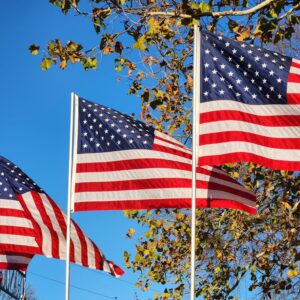By Thomas Best
Today is a milestone for me and this podcast. This is episode #100. Along the way, I have shared fun-loving accounts of everything from the Beatles to baseball, and—very often—as with today, traveling across our nation. It has been my pleasure to work with this radio station and the people who have afforded me a such fulfilling opportunity in my retirement from teaching. I will continue sharing, what I trust are, fascinating accounts about society, history, culture, geography, and whatever catches my curious eye.
So, today let’s continue the saga I began sharing last week about the travels across the of Southland with Frederick Olmstead in the 1850s and Tony Horwitz, who described his parallel story of southern travel in this book from 2019, “Spying on the South.”
On this episode, I will continue sharing insights about what these observant travelers found most intriguing, and also sometimes bothersome, about Louisiana, especially New Orleans.
If you have every ventured down along the Mississippi Delta to New Orleans, you will know that the river looks so much wider than it would have been in Olmstead’s day. Not so much tree-lined as it once looked, the Mississippi River is now often bordered by big chemical and oil refining plants. The Mississippi River, while a main artery for shipping goods to the port of New Orleans, is today a much more massive shipping route now. Indeed, large ocean-going ships in an around the “Cresent City” are daily observed making their slow-paced journey from large loading docks out into the Gulf of Mexico and to ports all over the world. In Olmstead’s day, hundreds of steamboats, featuring crude cabins could be found on the lower reaches of the mighty Mississippi. These working boats catering to the rough-hewn rivermen who sought strong drinks, gambling, and female companionship in equal amounts in a gritty life-style.
Once in New Orleans, even in Olmstead’s time, you see both the landscape and the people changing around this southern port. What stood out to both Olmstead and Horwitz were the unique people and their European-inspired culture. This is the land of the Creoles and the Cajuns. People often love—but also confuse—them due to their French roots, great food (although Cajun is much spicier), and a relaxed lifestyle enlivened at times by their fondness for good drinks, spirited dancing, and soulful music. As when I visited “the Big Easy,” a few years ago, you have to remind yourself that you are still in the United States. New Orleans feels even different than a good portion of the deep South. From the both French and Spanish inspired architecture, you could open your eyes here and easily think of yourself in a European urban setting. From the long-time mixing of races and cultures, New Orleans is both a city of amazing diversity. Sadly, their natural tradition of dealing with massive hurricanes has also left the city with sections of disrepair and neglect where only the poorest and most destitute people dare live.
Next week, we will continue these travelers’ adventures with an examination of what they found in visiting the Lone Star State of Texas.













